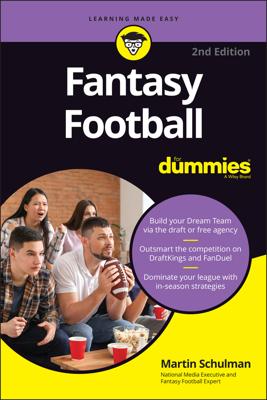![[Credit: ©iStockphoto.com/Aksonov]](https://www.dummies.com/wp-content/uploads/467743.image0.jpg)
Step 1: Decide what the winner and loser will receive.
Determine what the winner (top most ranking league member) will win and what the loser (bottom most ranking league member) will have to do. To keep things interesting, many private leagues offer a trophy and some form of prize or even just “bragging rights” to the winner.The loser then often is forced to perform some sort of humiliating act as punishment for ranking last in the league. The prizes can vary from gift cards, cash pots, and gag gifts. The loser can be forced to do stuff like eat something disgusting or pay a penalty into the cash pot — the possibilities are endless.
Keep in mind that if you are offering a cash pot, you need to charge an entry fee. The entry fee amount will determine the size of the cash prize at the end of the season.
Choose a punishment that is not illegal! For instance, do not make the loser run naked down Main Street. Instead choose an appropriate, yet humiliating task, such as making the loser wear a ridiculous costume to the grocery store.
Step 2: Determine team size and draft rules.
The size of the team decides how difficult the league will be to follow. Standard leagues run teams with 15–18 players. The standard roster is listed as follows:-
2 Centers
-
2 Left Wings
-
2 Right Wings
-
4 Defensemen
-
2 Goalies/Goaltenders
-
3–6 Bench/Utility slots (any position qualifies)
-
2 Open utility slots for injury reserves
After you determine the size of the teams you want your league to use, you then have to decide if you want to allow trades. If you decide to allow trades, you will then have to determine how many trades your league will allow in the season. Pick a date and time you will allow the trades to take place and include it in the rule packet you provide to the members of your league.
Step 3: Determine the order the members get to pick out their players.
Keep in mind that letting one member choose all of his or her team’s players at once is not fair. Rotate your picks through each team owner so each member gets to choose one player at a time until all available slots are filled.After you determine how the players will be picked, you need to set a salary cap for all your league members and determine a salary value for all the players within the NHL.
Good league creators (commissioners) create and offer cheat sheets to league members to help move the draft along more quickly.
Step 4: Determine scoring categories and type.
The next step is to decide what game format you want your league to use. A 4 x 4 league would use 4 defensive/goalie stats and 4 offensive stats. A 2 x 2 x 2 league would use 2 defensive stats, 2 goalie stats, and 2 offensive stats and so on.The format number does not determine team sizes but determines how many stats each player qualifies to be scored on. The lower the number, the easier it will be to score your whole team accordingly.
After you determine what stats you want to score, you need to determine how you want to tally the score on those stats. If you like the win/loss system, decide whether you want to use it in a win/loss one win format or win/loss for all categories format. If you would rather use the point system, you will then need to create a list of statistical categories you want to use and set point values for each stat.
Step 5: Decide the league’s timeframe.
After you have followed all other steps, you need to determine whether a daily or weekly league would be more appropriate. With a daily league you and all other league members would have to contact each other on a daily basis to announce your player rotations and post your points or wins/losses on the community score sheet. A weekly league will perform in the same manner, but weekly as opposed to daily through the whole season.If you want to try a league but don’t want to invest months of time into a full standard format league, then you can always create an express format league in which you limit player allowances, stats scored, and dates played. You can even create an express league to last only one weekend or through just the season's playoffs.
This game is extremely flexible in terms of how to play. You can use any of the standard rules or none of them; the choice is really up to you.

